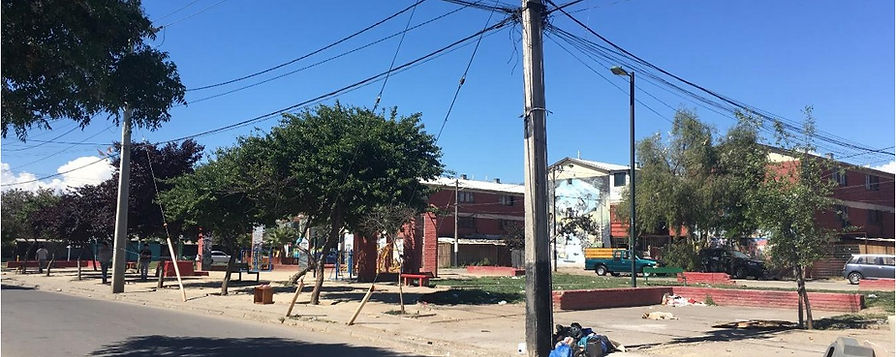Cristhian Figueroa
Assistant Professor
Universidad Tecnológica Metropolitana
Architect and Master in Urban Projects from the Pontifical Catholic University of Chile. PhD in Transport Studies from the Institute for Transport Studies at the University of Leeds. His research explores the links between the built environment and the social structures of Santiago's vulnerable neighbourhoods.
Facing crime and heat "bit by bit"
Keywords:
Santiago, Chile, Women, Poverty, Climate change

She is nearly 50 years old, has a partner, and has three children: two adult daughters and a young son. She lives in a neighbourhood on the outskirts of Santiago. It is an old neighbourhood that began construction in the 1960s and was improved through the efforts of her parents and neighbours. However, she lives in fear.
She limits her time outdoors to hours of daylight. She fears the night—not because her neighbourhood is particularly dangerous, but because, since the pandemic, crime has become a widespread problem in Santiago. On top of these restrictions, a new challenge has emerged: the heat. Her neighbourhood has little vegetation. Trees were cut down to make way for parking spaces or out of fear that they might be used as hiding spots by criminals. In addition, the streets and the few open spaces in the homes are completely paved. The heat is unbearable for much of the day during increasingly long summers. Her young son cannot go outside during the day and remains indoors, nor can she go out for a walk, buy groceries, or meet with friends.
She feels she lives in an abandoned neighbourhood, one forgotten by the Chilean state since its foundation, where no investment has been made in decades. The streets look old, and many of the people who helped establish the neighbourhood are now struggling to leave their homes. She has witnessed falls caused by broken pavements, resulting in serious injuries for some older neighbours. She also feels her neighbourhood is stigmatised. She has lied or avoided mentioning where she lives when seeking jobs or meeting new people, fearing rejection. Despite this, she loves her neighbourhood, especially her neighbours, whom she has known for decades and believes have been essential to the progress they have achieved together. Her two daughters are now at university—the first in the family to become professionals—and she feels she has amenities she could only have dreamed of as a child.
She wishes for a better place for herself and her neighbours. In fact, if it were up to her, she would move all her neighbours to a better-located neighbourhood, with more pleasant streets and larger homes. She also wishes her daily life could be easier. For now, she does everything she needs to, but it requires carefully planned strategies. When returning home late, she calls her partner on her mobile phone and keeps it in hand once he answers, relying on the thought that he would hear her if anything were to happen. Then, when she gets off public transport, she avoids repeating her routes to prevent anyone from becoming familiar with her routines. She and her partner both work, but this is possible because she can leave her young son with her mother, who lives nearby. She improves her life “bit by bit,” fixing up her home with care and using savings she has gradually accumulated over the years.